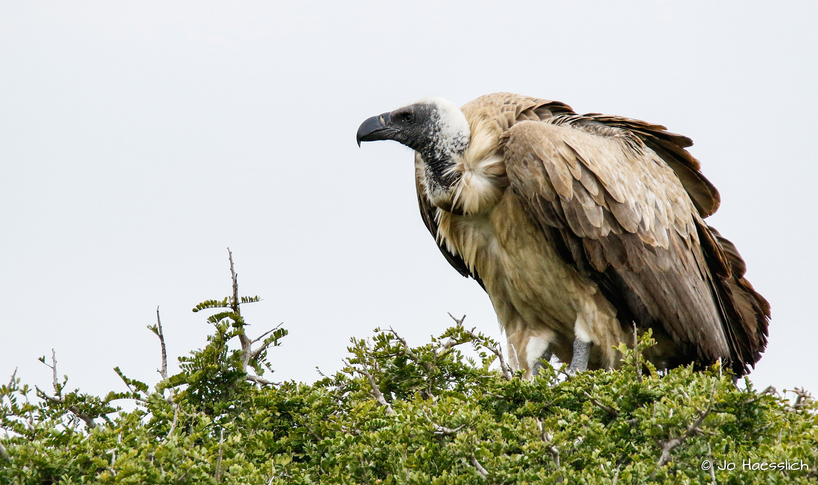Rare White-Backed Vulture Sighting

It was with great excitement that Kariega field guides Jo and Daniel reported a sighting of a white-backed vulture at Kariega Game Reserve. This is rare for two reasons, the first being that this vulture is not endemic to our area and the second is that it is a critically endangered species.
The white-backed vulture is a large scavenging bird with a bald head, long neck, broad wings, short tail feathers and a white neck ruff. Like all other vultures, this bird has incredible eyesight which helps it to find food from high on the thermals. Vultures have been recorded to find carrion of one meter from a height of up to six kilometers.
According to BirdLife International, the native (resident) range of the white-backed vulture in South Africa is up the coast north of Durban in Kwa-Zulu Natal and north-west of Bloemfontein in the Free State province.
White-Backed Vultures are Critically Endangered
The white-backed vulture is one of seven vultures that regularly occur and breed in South Africa. The others are the bearded, Cape Griffon, Palmnut, hooded, white-backed, lappet-faced and white-headed vultures.
The white-backed vulture has been listed as Critically Endangered on the IUCN Red List of Threatened Species since 2015. It's numbers have rapidly declined mostly due to habitat loss, hunting for trade, collisions with power lines and poisoning. According to conservation organisation WildLife Act, there were only 3,765 breeding pairs of white-backed vultures counted in South Africa in 2015.
It is not only the white-backed vulture that is at risk, all vulture numbers are alarmingly low and on the decrease. All except two of the vultures found in South Africa are listed as Endangered or Critically Endangered on the IUCN Red List of Threatened Species.
Five Interesting Vulture Facts
- There are 22 species of vulture with 7 of these regularly seen in South Africa
- Vultures can eat up to 20% of their own body weight in one sitting
- A group of vultures is called a wake, a committee or a venue
- Vultures have bald heads and bare necks so that when they feed on rotting carcasses, bacteria and parasites cannot burrow into their feathers and cause infection.
- Most vultures mate for life
Thank you to ranger Jo for capturing this great sighting for us all to enjoy.
Please help to spread awareness about the plight of South Africa’s vultures. Share this article with friends and help us to get people involved to conserve and protect African birds and wildlife.









